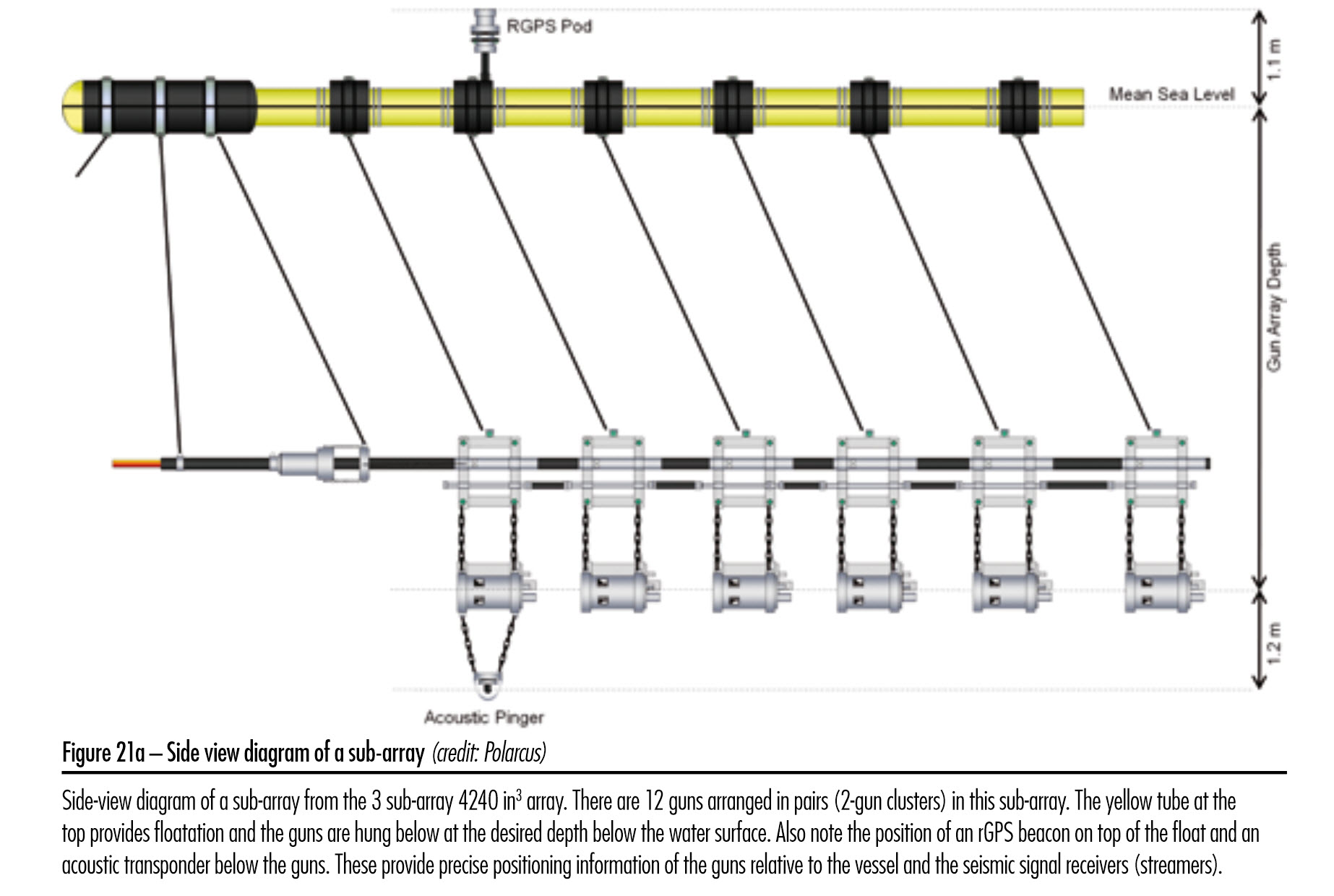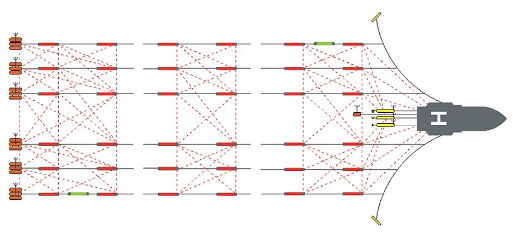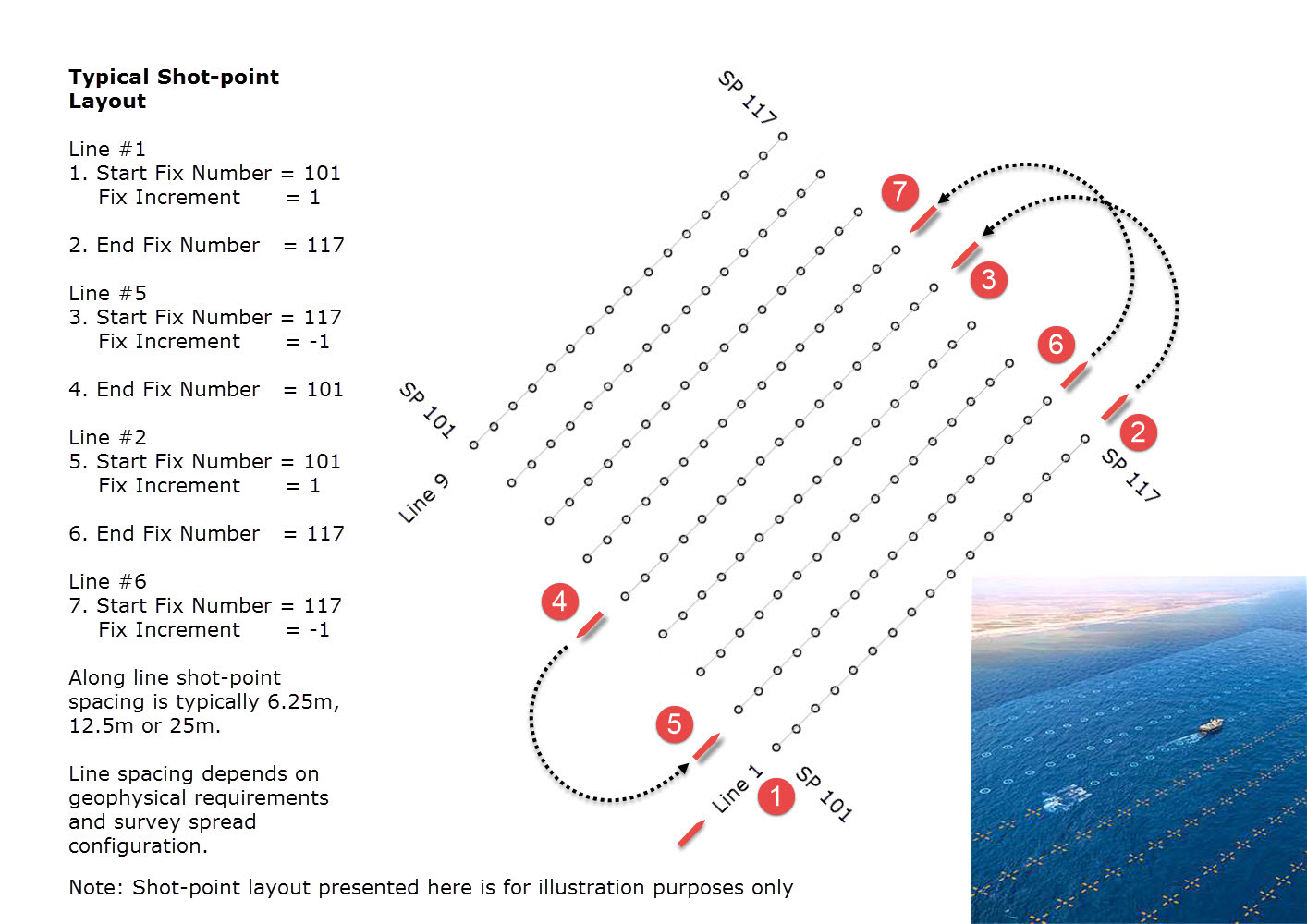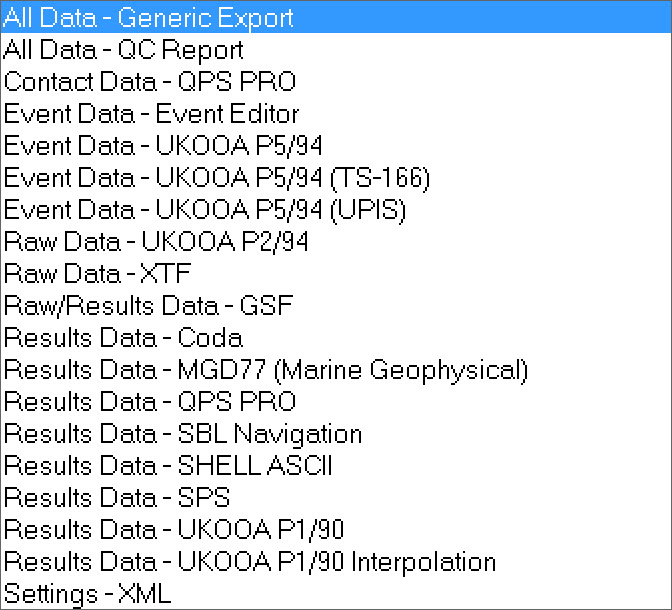2D and 3D Towed Streamer Seismic Surveys
On this page:
General Information
Info
Only information particularly pertinent to towed streamer operations is presented here; please refer to other Qinsy documentation for other aspects of performing and processing a survey with Qinsy (Drivers & Interfacing Manual, Knowledge Base, Help pages).
Until the beginning of the 1980s, 2D seismic surveys employing a single source and one streamer predominated in oil and gas exploration. 3D surveys employing multiple sources and streamers are now the norm, although many shallow water high resolution geohazard surveys are still shot in 2D.
The major components are similar in either case: towing vessel, seismic source(s), streamer(s), and tail-buoy(s).

Seismic Source
A seismic source is defined as any device which releases energy into the earth in the form of seismic waves. The major source type in marine exploration is the air-gun array.
An air-gun array consists of sub-arrays called strings, each string containing multiple individual guns.
An array often involves between 18 and 48 guns, although in special cases as many as 100 guns per array can be used.
The air-guns hang in the sea beneath floats between 3m and 10m below the sea surface, generally at about 6m. The guns fire every 10-15 seconds.
A Gun Controller synchronizes all the timing associated with firing the gun arrays.

Each air gun in an array has a slightly different delay between the reception of a 'trigger signal' by the air gun and the actual time of firing of the air gun. For each air gun, this measured delay is utilized as the characteristic time delay for the air gun for the next firing sequence. At each firing sequence upon the receipt of a master fire command, the controller transmits a trigger signal to each air gun only after the expiration of a trigger delay time appropriate to that specific air gun. By appropriate selection of the individual trigger delay times, the controller insures that the individual air guns are fired precisely in a predetermined sequence. Since the characteristic time delay for any individual air gun is measured at each shot, these time delays utilized by the controller are very precise.
QINSy is able to issue the gun firing 'trigger signal' based on a pre-load time. To do this a trigger is sent to the Controller via a QPS Trigger Device a short time before the gun should fire precisely when it reaches the shot-point. A return trigger from the Controller is sent to QINSy to initiate the fix that records the instant the gun array actually fired.
Seismic Spread
While streamers in some 2D survey spreads will incorporate compasses, depth sensors and a positioned tail-buoy, survey spreads used in 3D surveys invariably include all these items as well as potentially other objects such as: front end floats' mid and tail-end acoustic arrays measuring ranges between towing vessel, guns, streamers and tail-buoys; diverters/deflectors.

Line and Shot-point Control
The purpose of all these observations is to compute, by least squares network adjustment, the position and orientation of known points (e.g. acoustic nodes, compass positions) along each streamer so that the positions of each receiver group in each streamer can be modeled (positioned) between the known points. Receiver groups are typically spaced at 6.25m, 12.5m or 25m intervals.The ultimate purpose is to know the exact location of each receiver group each time the sound source is fired.
In shallower water, high-resolution seismic data for geohazard surveys is often acquired using a single source and a relatively short cable/streamer. In many cases no positioning sensors on the cable are used, the assumption being that the streamer remains straight and follows the track of the towing vessel. The front end of the cable is typically positioned by using a layback. Receiver group positions are computed from this layback point using vessel course made good.
Positioning data is usually acquired by sailing multiple parallel straight lines. So-called 'shot-points' are arrayed at set intervals along each line; typically shot point spacing is 6.25m, 12.5m or 25m.The parallel lines are spaced at a multiple of the shot-point interval dependent on various factors including the number of streamers employed. The objective is to fire the sound source at the exact moment it reaches each shot-point, at which time a position fix is taken. In most cases the requirement is to use the same shot-point number (SP#) at the start of each line. If lines are the same length, the last SP# should be the same on each line. The shot-point increment is -1 when shooting a line in the opposite direction. The picture and diagram below illustrate the principle:

Qinsy Information
The foregoing General Information is intended as a primer to creating a suitable template database, acquiring data online with correct 'fixing' of shot-points, and exporting the data in various formats:

Detailed information is presented for:
Return to top of page
Return to: How-to Geophysical Survey
